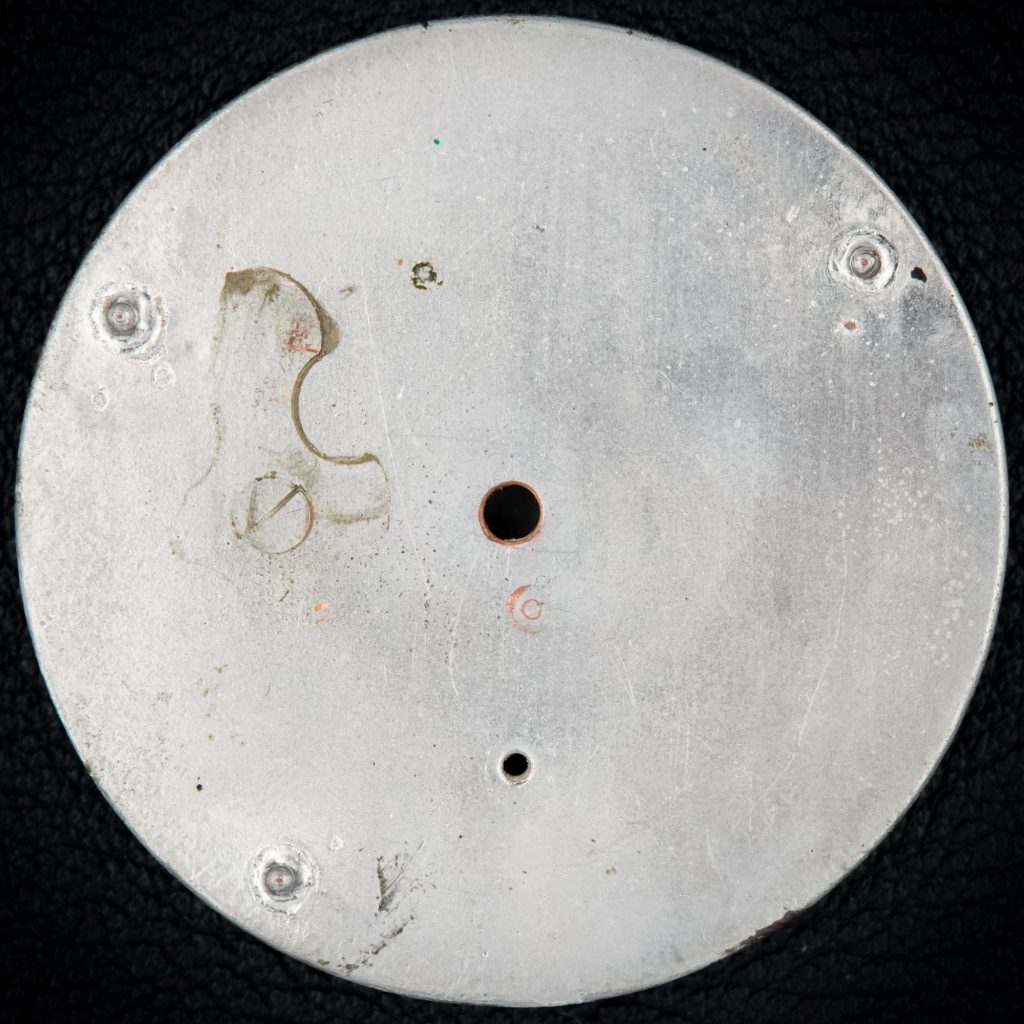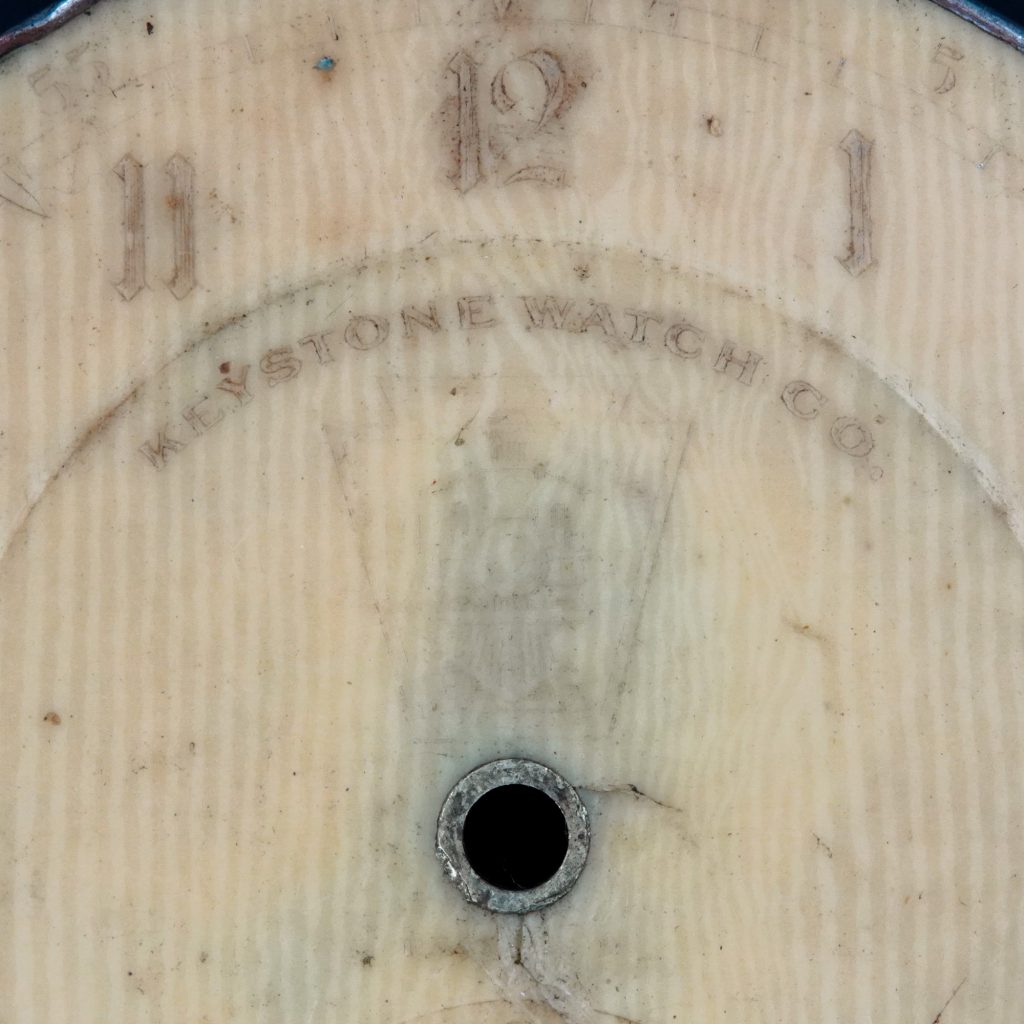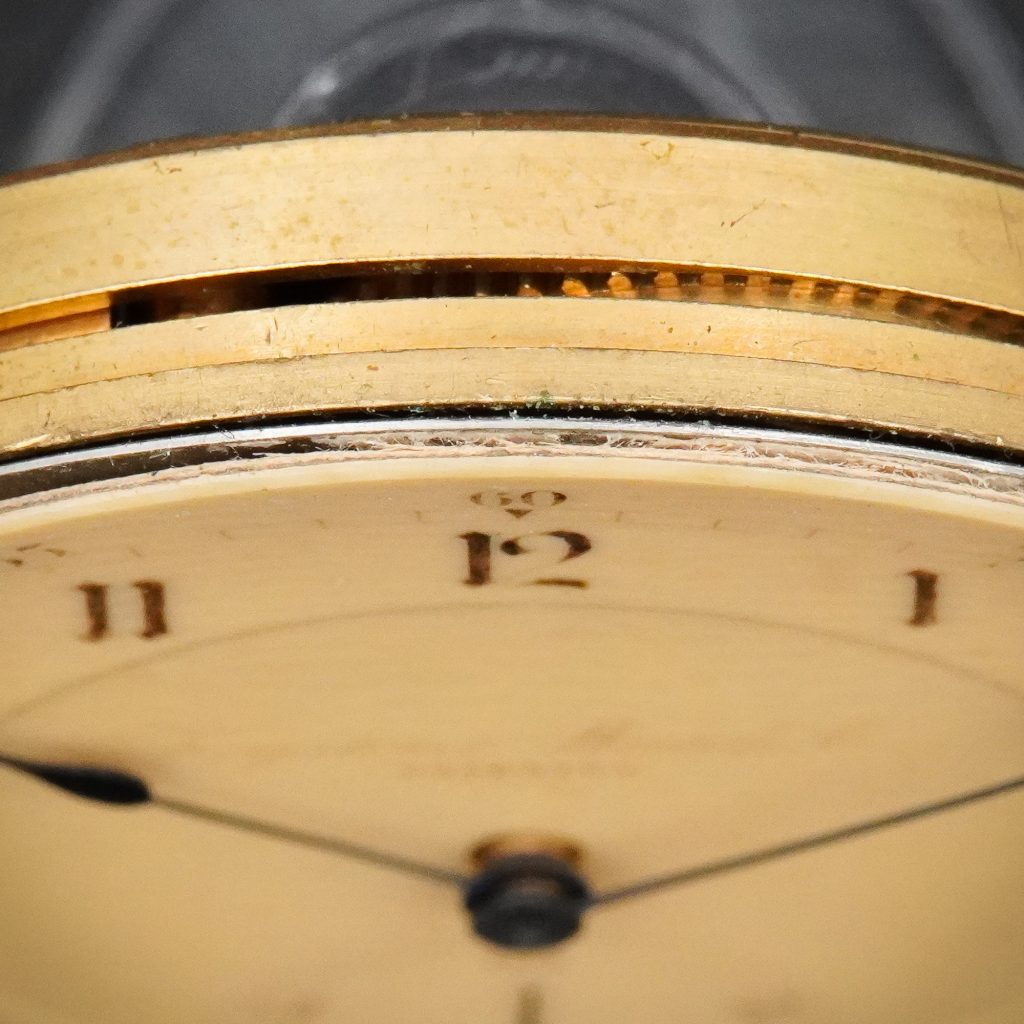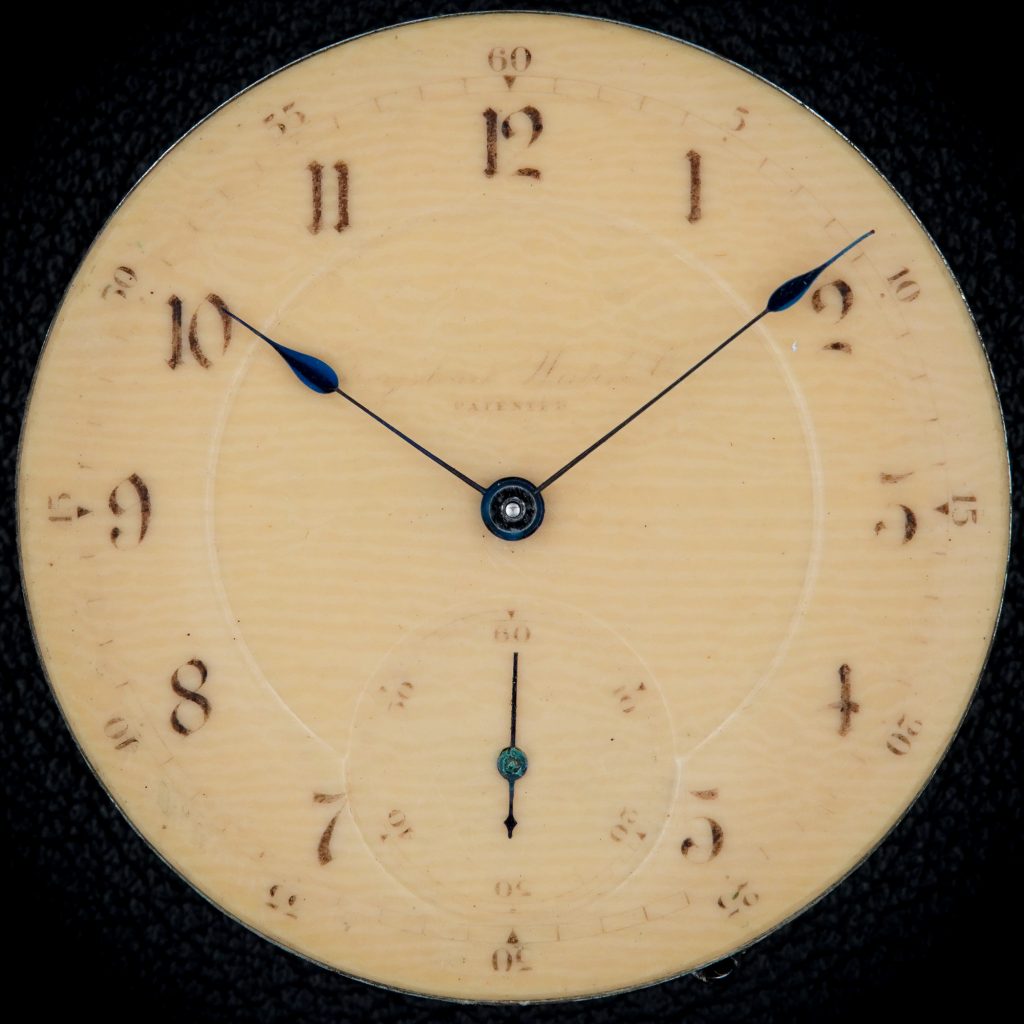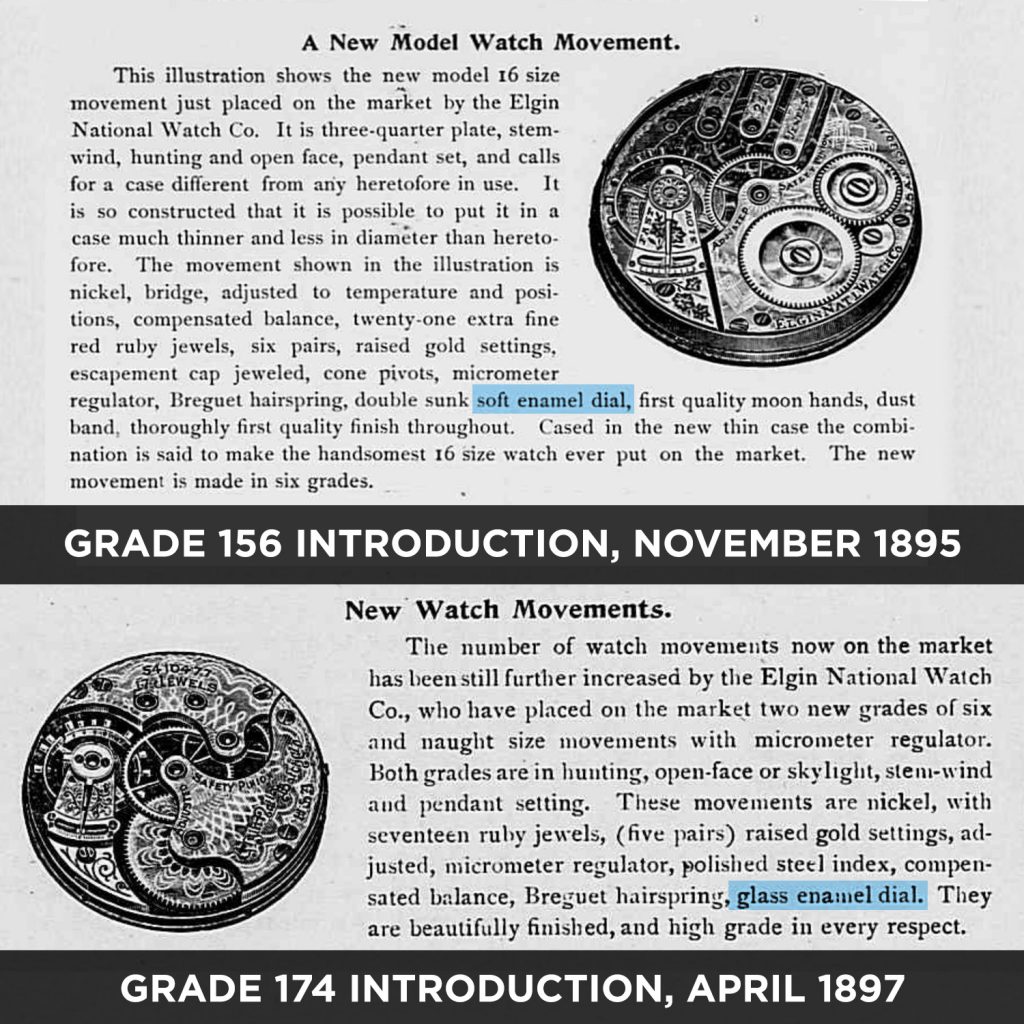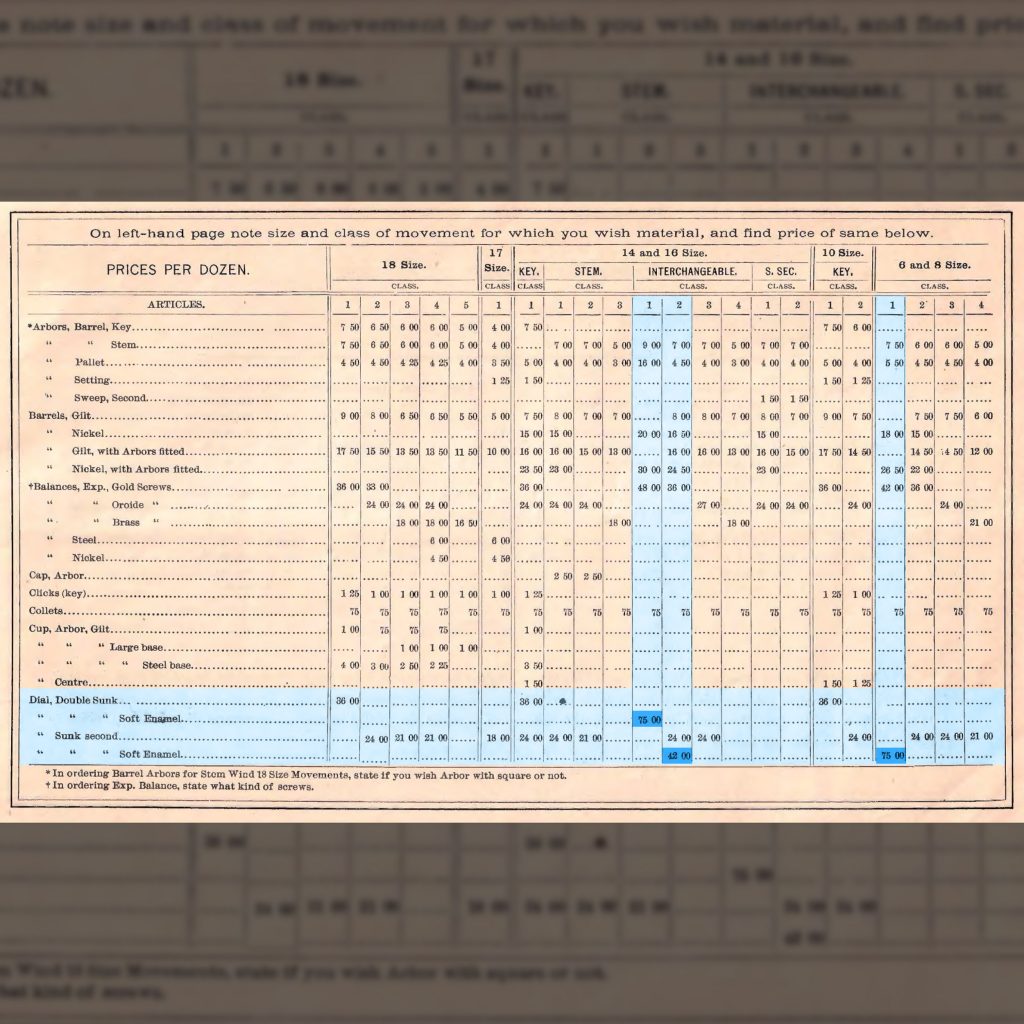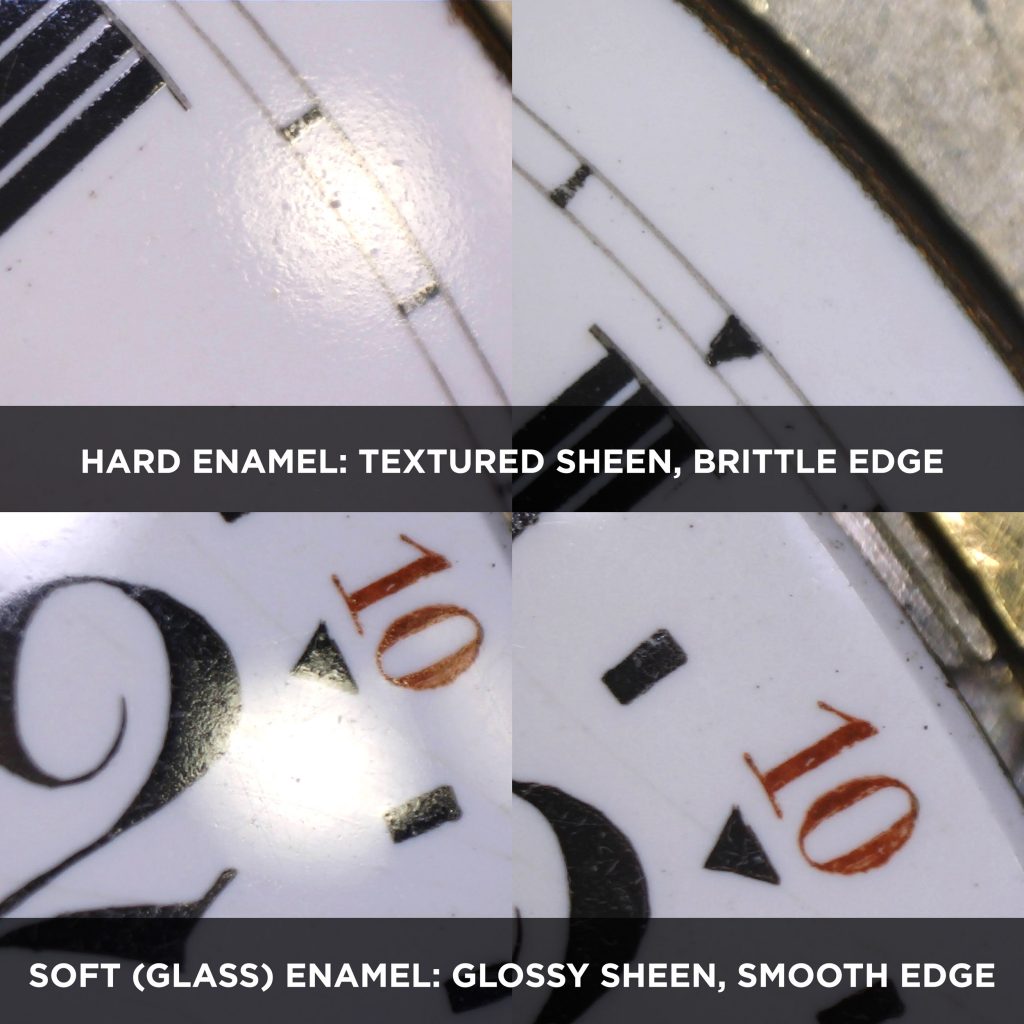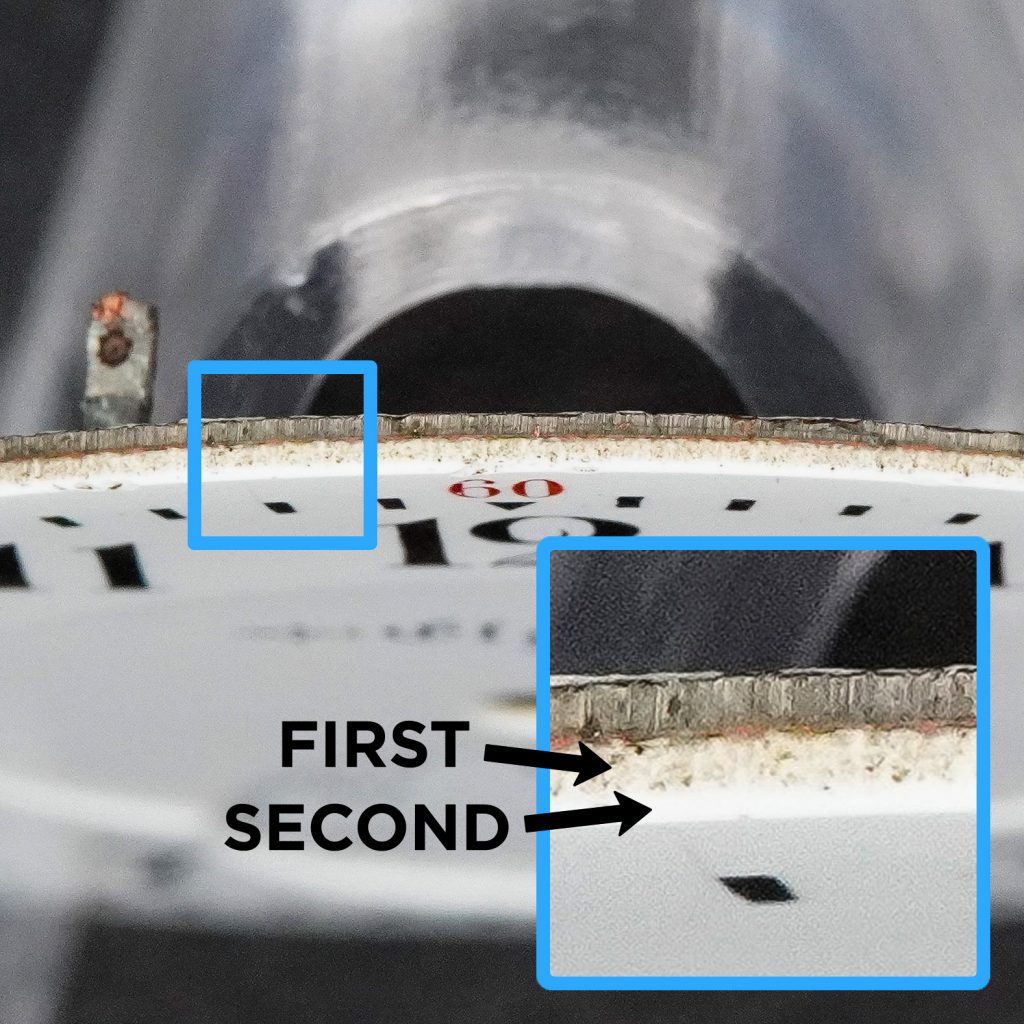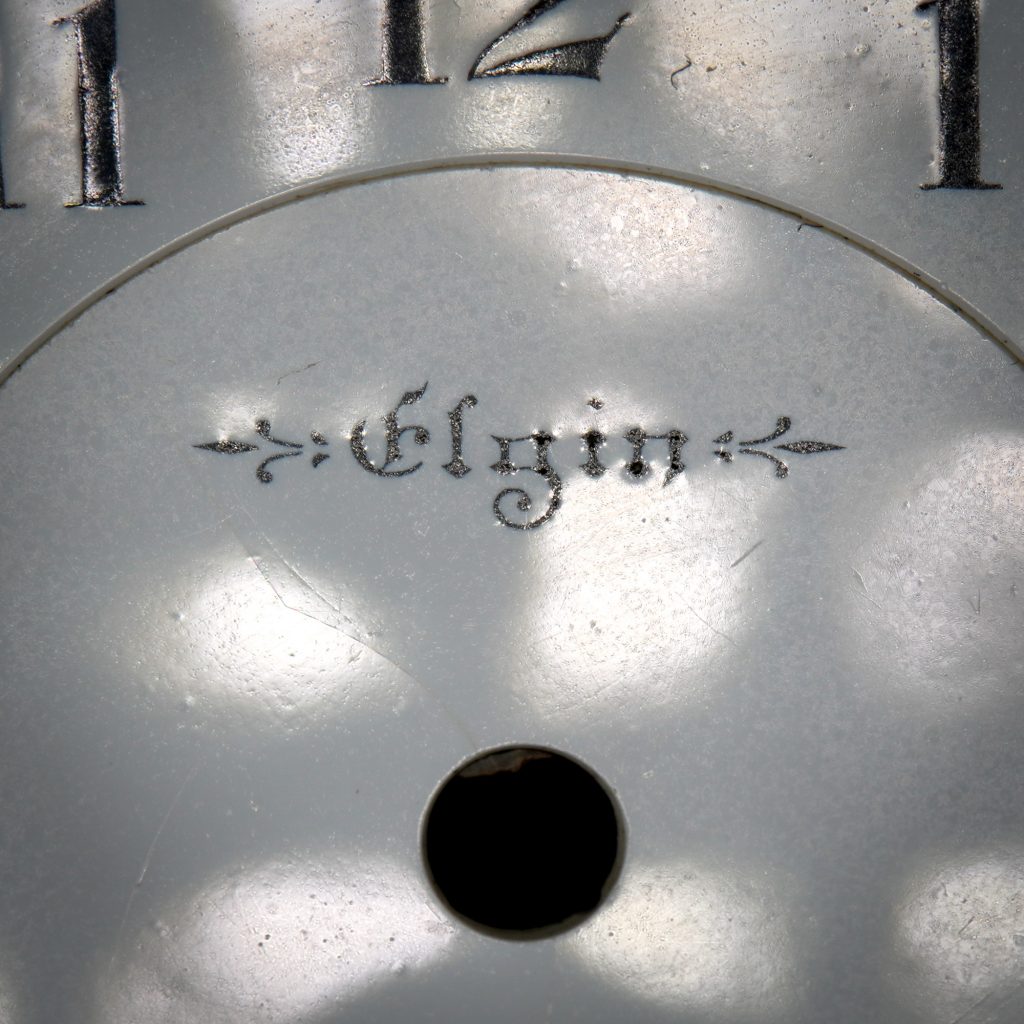Dials
Pictured: Celluloid Keystone Locomotive Watch Dial from the Keystone Watch Company Another variation of the celluloid dials produced by the Keystone Watch Company features the front of a locomotive enclosed.
Pictured: Edge of Celluloid Watch Dials from the Keystone Watch Company Showing Paper Substrate Despite the failure of Abraham Bitner’s patented paper dial at the Lancaster Watch Company during the.
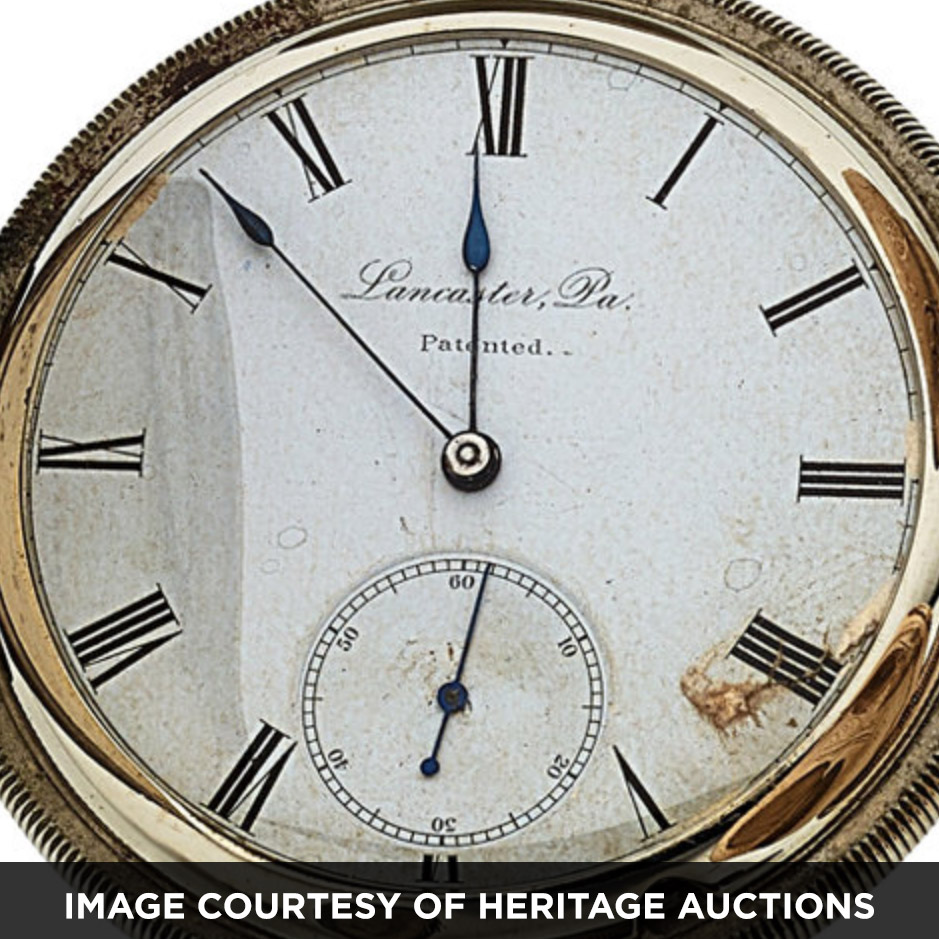
Pictured: Celluloid “French Ivory” Watch Dials from the Keystone Watch Company In seeking an inexpensive alternative to standard enamel dials, the Keystone Watch Company introduced a watch dial manufactured from.
During the early introduction of soft enamel dials to the broader watch market in the 1870s and 1880s, the term “soft enamel” was used to describe them, logically contrasting the.
The process of manufacturing Venetian hard enamel dials is very similar to manufacturing English soft glass enamel dials. In both instances, hard enamel is utilized for the backs of the.
Pictured: Edge of 18-Size Soft Glass Enamel Dial by the Elgin National Watch Company, showcasing the two layers of glass (soft) enamel applied to the front of the dial. The.

